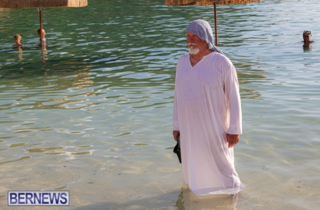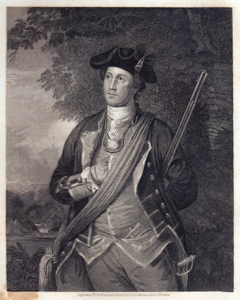Compiled by retired Det/Superintedent George Rose
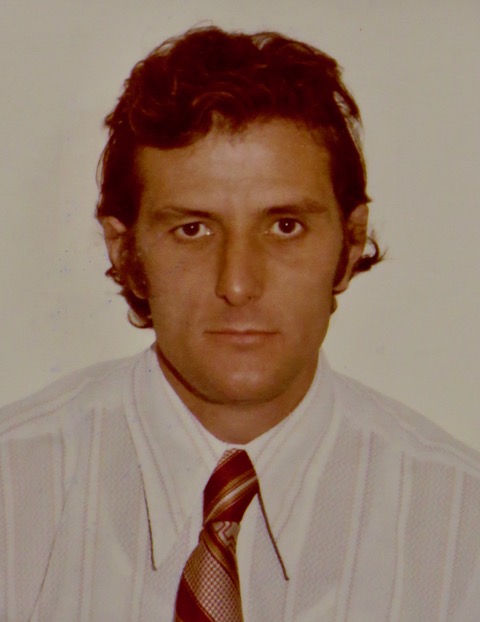 George Rose
George Rose
On the morning of Monday, October 30th 1972 a physical education teacher by the name of Ian David Jordan was brutally attacked with a baseball bat whilst in the gymnasium at Prospect Primary School. Jordan was seriously injured during the attack and was detained at the King Edward VII Memorial Hospital for eight days during which time he underwent surgery on the Radius and Ulna bones of his left forearm. One of the two broken sections of the Ulna shaft had to be surgically removed from the forearm before a rod could be inserted to join and support the two sections before being replaced into the forearm.
These were classic defence wounds as Jordan sought to defend his head against injury.
The assailant was identified as Wilton ‘Jomo’ Hayward, the father of one of the students of the same name in Jordan’s class earlier that morning.
Detective Constable Michael Goode was assigned to investigate the case but he was having difficulties locating Hayward. I knew Hayward by sight and joined Dc Goode in his investigation and together with Dc’s Keith Dunmore and Michael Collingridge we spent a number days in our search for him making daily visits to his house, speaking with his neighbours, and checking his known hang-outs.
P.C. Michael Goode
On the morning of November 10th we received information that Hayward was at one of his haunts in the Washington Mall. In company with Dc Goode we went to the Mall and approached Hayward who immediately became hostile in speech and manner. He was arrested for having intentionally assaulted Mr. Jordan causing him grievous bodily harm. After being cautioned he replied, “Man, you can’t arrest me without a warrant.”
I explained to Hayward the procedure of arrest without a warrant and again said to him, “You’re under arrest ‘Jomo’.” He said, “I don’t want nothing to do with your laws, that man hit my kid.”
Nevertheless, he accompanied us peacefully to the Police Station where he was questioned. Hayward never denied the assault allegation against him but declined to provide a statement on the advice of his lawyer. He was bailed to attend plea court on Monday 13th but failed to appear and the following day I obtained a warrant to arrest him on the grounds that he was likely to abscond the island.
Due to his no show we again actively searched for Hayward with daily visits to his house and his known haunts. Obviously feeling the pressure, three weeks later on December 6th Hayward turned himself in at the CID offices in Hamilton where I formally arrested him for failing to appear in court. Together with DI Donald I escorted him to the detention cell area of the station where he became awkward and argumentative refusing three times to give his name and address when asked by the Station Constable [Pc Fowkes]. I gave Pc Fowkes Hayward’s particulars.
Hayward removed some personal possessions from his pockets when Constable Fowkes asked him to do so. He removed his necklace of his own accord when asked to do so.
Hayward picked up the telephone and I asked him who he was calling. He replied, “Nobody yet” and replaced the receiver. He began laughing and slapping a clenched fist into the palm of his other hand. While removing his own trouser-belt Hayward wrapped it around his left hand, pointed it towards me and said, “I’d like to lash you with it.” He uncoiled the belt and left it on the table-top.
I told Hayward I had to search his pockets and asked him if he had a wristwatch on. I moved towards him putting my right hand into his left front pocket and as I did so he suddenly lashed out at me knocking me backwards. He said: “Keep your white hands off me pig.” He punched me several times in the upper chest which drove me backwards. I regained my balance, closed with him and a struggle ensued. He was fighting wildly and the struggle went across the room to the far corner. Pc Fowkes pinned Hayward in the corner but couldn’t hold him. I shouted for assistance and during the continuing struggle I was knocked to the floor and Hayward came down on top of me with both knees in my chest.
P.C. Rodney Fowkes
Moments later Dc Pett entered the room and dragged Hayward off me as he shouted “Alright. Alright, I’ll stop. I’ll stop.” Hayward stopped fighting and was placed in a detention cell.
P.C. Maurice "Moby" Pett
As the day progressed, I developed considerable pain across the left side of my chest and subsequently attended the KEMH where I was X-rayed and diagnosed with severe rib cartilage bruising requiring pain killers.
A preliminary hearing was set for Hayward on December 4, 1972 on an indictable charge of causing grievous bodily harm to Ian David Jordan.
Hayward was now facing two court appearances –
One summary charge in Magistrates Court for his assault on myself, and one Indictable charge in the Supreme Court for his assault on Jordan.
MAGISTRATES COURT TRIAL
MAN WITH “PERSECUTION COMPLEX” GETS FOUR MONTHS IMPRISONMENT
After a short trial in Hamilton magistrates court on December 28, 1972 Hayward was sent to prison for four months by the Wor. K.C. Nadarajah after his conviction for having assaulted me in the Hamilton Police Station. He had pled not guilty, and was not represented.’
When giving my evidence I advised the court that when this assault took place Hayward had been arrested in connection with another matter.
In an unsworn statement from the dock, Hayward told the court, “It is a fact that the police are always taking people behind closed doors and beating them severely whether they are guilty or not.”
He denied calling me a pig, and said the only thing he did was – “Call on the Almighty for strength to free me from what was happening.”
The magistrate said it was common for the police around the world to be accused of brutality – and in some cases, perhaps it was true. “However, I see nothing in this case to suggest this is what happened in this incident.” He told Hayward he had a persecution complex.
SUPREME COURT TRIAL
TEACHER CLAIMS BOY’S FATHER BROKE HIS ARM TWICE
A two-day Supreme Court trial commenced on Tuesday, June 19, 1973, when a teacher told the jury that his arm had been broken during an attack by the father of one of his pupils, after he gave the child a “token” hit on the bottom. The allegation was made at the trial of Wilton ‘Jomo’ Hayward Sr. (33), of Middle Road, Devonshire, who was accused of doing intentional bodily harm to the teacher, Ian David Jordan at Prospect Primary School.
Hayward pleaded not guilty and said he was acting in defense of his child. Prosecuting Crown Counsel was Mr. Richard Hector and Miss Ann Cartwright represented Hayward. Chief Justice the Hon. Sir John Summerfield presided.
The case opened with Jordan giving evidence. He said he did not believe in corporal punishment at all in schools. Punishment given should suit the children, he said, and yet punishment was a difficult word to analyze. Children were often mischievous and varied in offence.
A native of Australia, Jordan said he had joined Prospect Primary School last September after many years of experience in teaching. After describing how the usual punishments for failing to bring gym kits took the form of writing lines or reading a book while the lesson was in progress, Jordan said there was a token punishment he used when the children misbehaved. It was by using a miniature bat about eight inches long with the name of ‘Freddy’ on it, and it was referred to as ‘Freddy’. He told the children that if they misbehaved it would fly off its shelf and “get around them.” Jordan said he had an excellent rapport with the children, they treated ‘Freddy’ as a joke, and he had never used the bat until Friday, October 27, [1972] when he was taking Standard 1, whose average age was eight.
Before the incident, Jordan said, Wilton ‘Jomo’ Hayward Jr, a pupil of Standard 1, had failed to bring his gym clothing for six weeks. He was, he said, a mischievous boy, always on the go, never sitting still and it was rather difficult to get him to write lines. On this occasion, the first he had actually been out of the lesson, Jordan had got him to sit down and read a book with two other boys.
Jordan told the court, “Young Hayward was being naughty – nothing very serious, just disturbing the lesson in general with the other two boys.” He said that after repeated warnings, he told them: “Ok, ‘Freddy’s got you,” and he tokenly hit each boy on the bottom once. Two of them were a little upset and said they would not do it again but Hayward cried, which Jordan said upset him more than the child. He said it must have been due to the shock of being hit or embarrassment. Five minutes later Hayward was his usual happy self.
On the morning of the assault Jordan said he arrived at school as usual about 8.45 a.m. and was met by a number of children of all ages who often greeted him. They accompanied him into his office and shortly afterwards Hayward Snr appeared. Jordan said he was a bit puzzled and thought it must be one of the parents who had come to meet him, since many had done so because he was new at the school. Jordan said that halfway through his subsequent attack he saw Hayward Jr. looking scared.
Hayward Snr, he said, asked him: “Did you paddle my boy?” Jordan said he repeated the question then asked “Did you kick my boy?”
The accused looked a little upset so Jordan said they could go across to the headmaster, Mr. Crichlow, and work something out. Hayward replied: “I don’t want Crichlow,” – and all of a sudden Hayward attacked him, Jordan said. Hayward then hit Jordan in the jaw with a closed fist, “after which there was stunned silence from everyone – Hayward, the children and myself, the kids not believing what they saw and me not believing what I felt,” added Jordan.
Then Hayward just went crazy, Jordan continued. He described how the father (he did not learn his name till after the incident) picked up everything he could lay his hands on and threw it at him, including books and a spool of tape. Jordan said it all happened quickly and then Hayward found a baseball bat and shouted: “I’m going to kill you, you white bastard. I’m going to kill you.”
Jordan said Hayward then aimed the bat at his head and he put his left arm up, so the blow landed on his arm. Hayward hit him again quickly, again landing the blow on Jordan’s arm.
At this stage, Jordan said, he knew his arm was broken as he could not wave it; it was useless, and Hayward was coming at him again with the baseball bat so he (Jordan) picked up a child’s chair and pulled it in front of him with his right hand.
Hayward tried to hit him through the chair and struck it two or three or four times, he said. Hayward then swung the bat up and tried to get him across the leg, which he managed once, and he also tried to kick him in the groin during the latter part of the attack. Hayward only managed to kick him below the groin, said Jordan, resulting in bruises but no pain.
Jordan said he then called out for him to stop and told him: “Enough, enough, you’ve broken my arm.” By this time some children had left to fetch help. Hayward did not stop, but kept attacking him, Jordan said. Then Hayward looked towards the door, dropped the bat and left.
Asked [by Mr. Hector] if he had managed to inflict any blows on Hayward, Jordan replied no.
Jordan was taken to King Edward Memorial Hospital and detained for eight days during which time he underwent an operation on his forearm. The two blows had caused two breaks in the bone, which had to be taken out and a rod inserted. Jordan became an outpatient and underwent a second operation in February, [1973] he said. He returned to work about a week before Christmas [1972] but could not do his job. He felt pain and still did. The arm was expected to take another two or three months to heal, and even then, it would not be certain whether it would heal completely. Jordan said it restricted him at the moment in a number of areas of physical education teaching. He told the court that no-one had ever come to him with a complaint before.
During cross-examination by Miss Cartwright, Jordan said they did not have ‘Freddy’ any more as the police had taken it after the incident. The shape of a miniature cricket bat, it had already been in the gym when he arrived at the school last September, he said.
When Miss Cartwright suggested to him that he had picked up the chair after the accused had asked him if he had beaten his boy. Jordan replied: “You’ve got to be kidding.” Defence counsel suggested that perhaps Jordan had seen how upset Hayward was, to which Jordan answered: “I don’t go around picking up chairs to hit people if they look upset.”
When Miss Cartwright suggested that during the scuffle the bat fell off the shelf, Jordan replied: “You’re joking.” At Miss Cartwright’s suggestion that Hayward did not attempt to hit him over the head, Jordan replied that if he had not put his arm up to defend himself at that time he would not be here today.
Jordan told the court he had taught eight and nine-year olds before and had been in charge of his own school in Australia where the pupils were aged between four and a half and 15. He said Hayward had four children at Prospect Primary – three daughters as well as his son.
Jordan said he had been mildly irritated during that Friday’s lesson. He demonstrated how he had tokenly hit the boys.
Youngsters Donna S. F and Bertram N. both aged 12 of Standard V. told the court what they had seen during the incident. The girl, who said she was a friend of one of Hayward’s daughters at the school, and she saw Hayward walk into Jordan’s office and start kicking him. She said she saw Jordan pick up nothing until he was hit with a stick and then she ran out because she was scared. She said she also heard Hayward using bad language.
The boy, who said he liked Jordan, said that when he went into the room he saw Jordan on the floor.
Dc Michael Goode and Det. Sgt. George Rose also gave evidence, referring to November 10, 1972, when Hayward was arrested in Washington Mall, Hamilton.
Prospect Primary School headmaster Mr. Clevelyn Arthur James Crichlow told the court he had arrived at school on the morning of the incident as usual about 8.30 a.m. A student had informed him of the incident and on his way to the gym he saw Hayward and asked him what had happened. Hayward told him nobody was going to hit his child, and he did not want to talk about it. Reaching the gym, Crichlow said he found Jordan in pain and more or less incoherent. He took him to hospital in his car.
Students had shown Crichlow the baseball bat which had been used as a weapon and he handed it over to the police. He said he had not known about ‘Freddy.’
That concluded the case for the prosecution.
Hayward, who did not wish to give evidence or call any witnesses, chose to make a statement from the dock.
“On October 30 I was told by my Missus that my son had been beaten with a cricket bat due to the effect of not having gym equipment,” he said. “At that impulsive moment it made me so angry that I had to intercede.
“On my arrival at school I went directly to the principal’s office – there wasn’t anyone there at the time so I waited around outside the office and my son brought it to my awareness the gym master had arrived.
“At that moment I went to the gymnasium and entered and saw Mr. Jordan and asked him about three times: ‘Did you beat my son with a cricket bat because he didn’t have any gym clothes?’
“At that moment he said in reply to the effect he didn’t have the time so about the third time I asked him he reached for a metal chair with plywood at the back and on the seat. My reaction to that was to protect myself, not knowing how effective the words were to him.
“I scuffled . . . the next thing I knew I had to appear in court.”
The case was adjourned until the following morning for the closing addresses by the prosecution and defence followed by the Hon. Sir John Summerfield’s summation.
SENTENCE TODAY ON MAN GUILTY OF ATTACKING SCHOOL TEACHER
In his summation, Sir John referred to the incident as “a very serious matter” which, he said, had not been blown out of all proportion as defence counsel Miss Ann Cartwright had suggested. After just over 40 minutes deliberation, the jury returned their verdict of guilty against Hayward (33) for attacking his son’s physical education teacher. Sentence was deferred until the following morning by the Chief Justice and Hayward was remanded in custody until the following day when he was sentenced to two and a half years imprisonment. He is the father of eight children.
In passing sentence, the Chief Justice the Hon. Sir John Summerfield said: “I recognize that the prisoner’s background and congested living conditions, and the stress of supporting a large family in those conditions, may have contributed to his aggressive behavior. I take account of the fact that paternal concern, however misguided in the circumstances of this case, was a motivating factor. He has also expressed contrition through his counsel. The fact remains that the attack on the victim was unprovoked, sustained and severe. The consequences could have been far more serious. As it was, Mr. Jordan suffered severe injury from which he has still not fully recovered. The prisoner’s past history of aggressive behavior, although not on so serious a scale, is not conducive to lenient treatment. I have every sympathy for his family, who will suffer by his imprisonment, but his family commitments cannot be allowed to shield him from the consequences of his serious offence for which the maximum is ten years imprisonment.”
Compiled by George F. Rose
September 2025
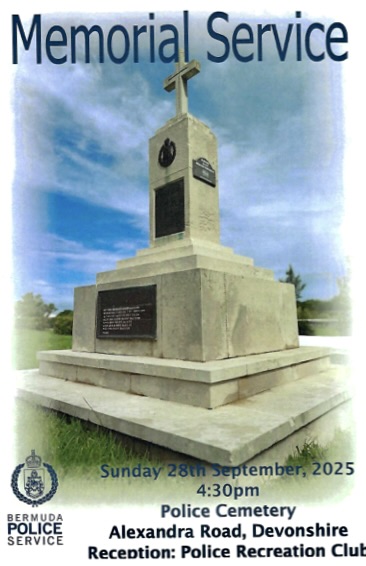


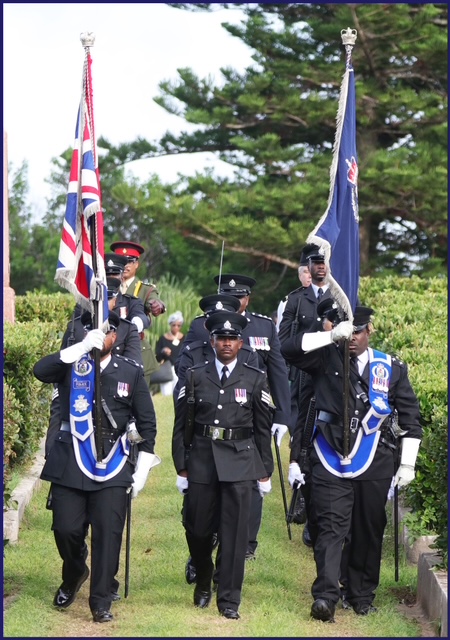

 Friends and families in attendance
Friends and families in attendance
 Carlton Adams reads the Honour Roll
Carlton Adams reads the Honour Roll

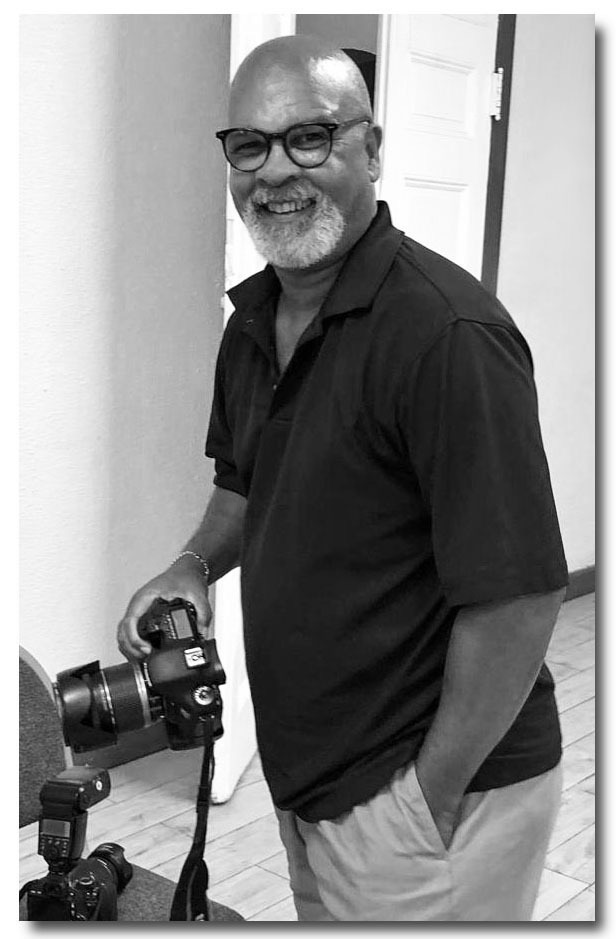 Dexter "Fudge" Flood
Dexter "Fudge" Flood George Rose
George Rose 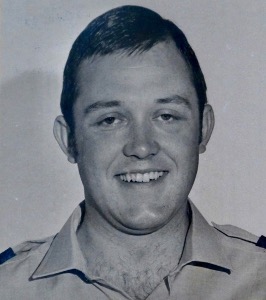
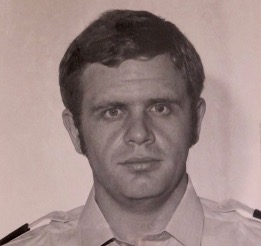
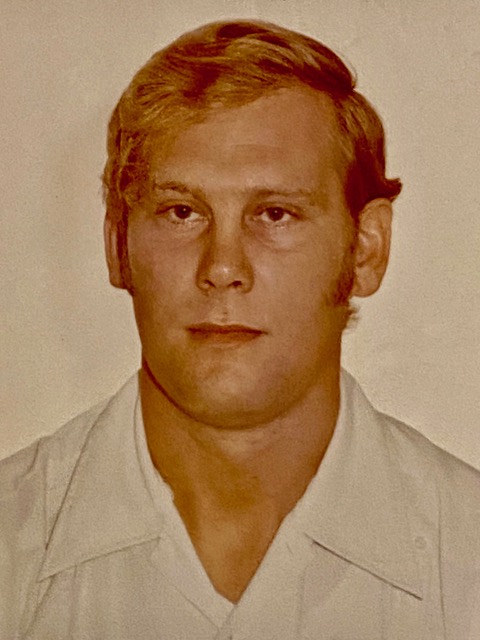

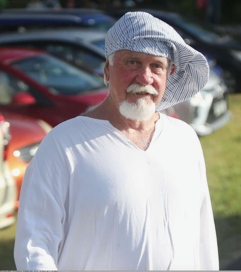
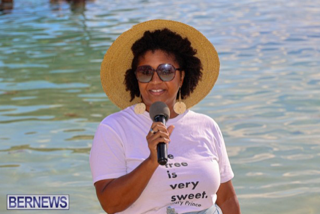

 Men (and women!) head down to the bay with their barrels of gunpowder
Men (and women!) head down to the bay with their barrels of gunpowder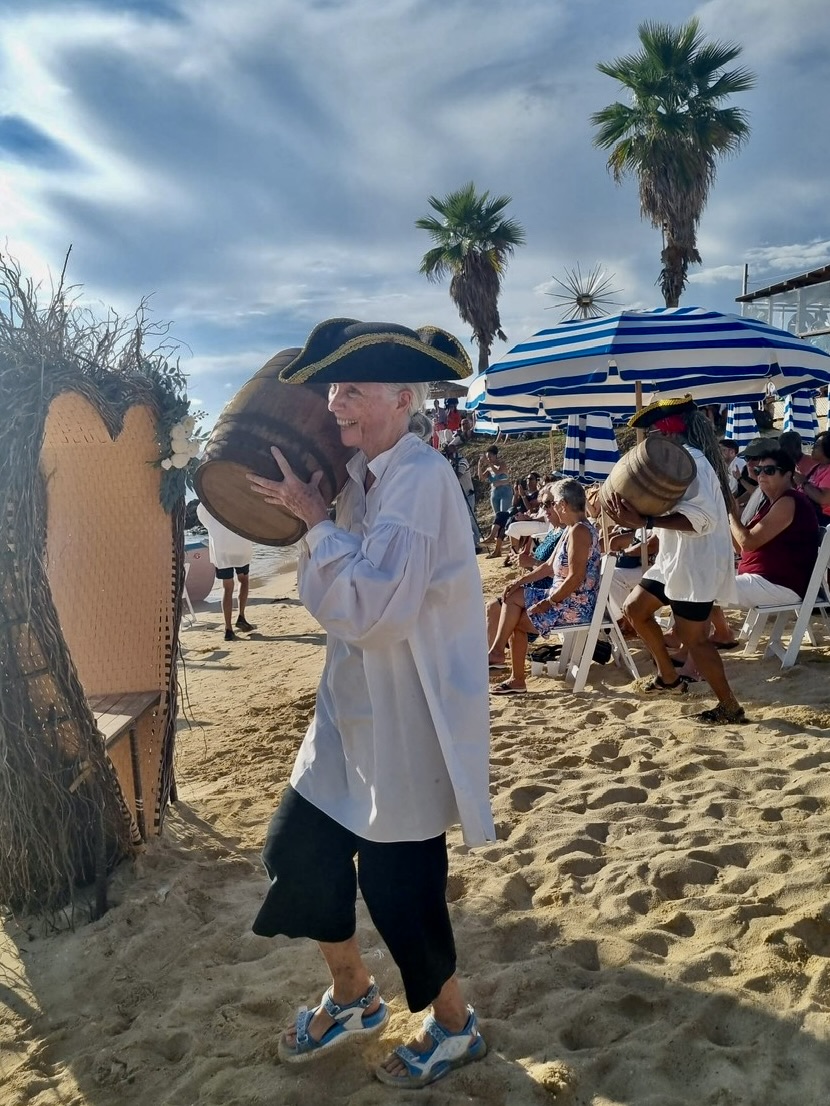 An almost exhausted Rebel Gunpowder Thief!
An almost exhausted Rebel Gunpowder Thief!